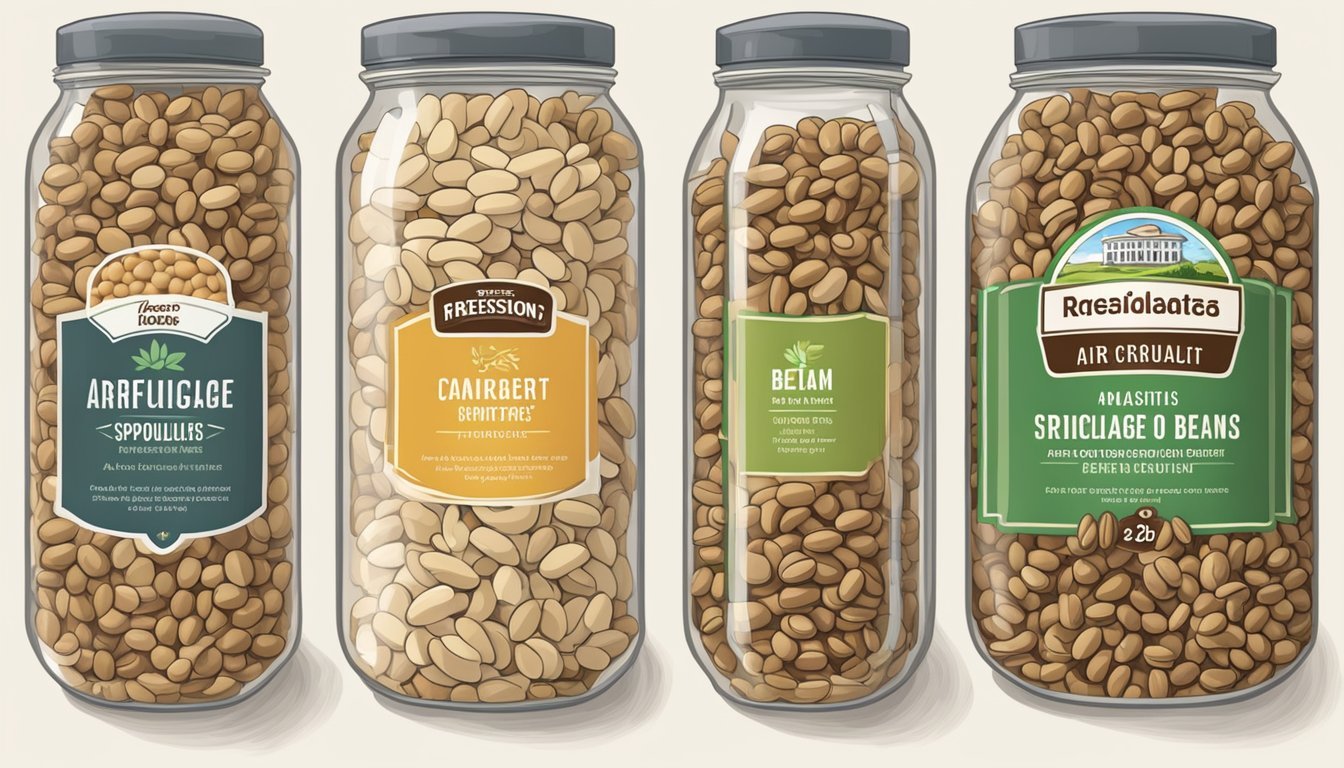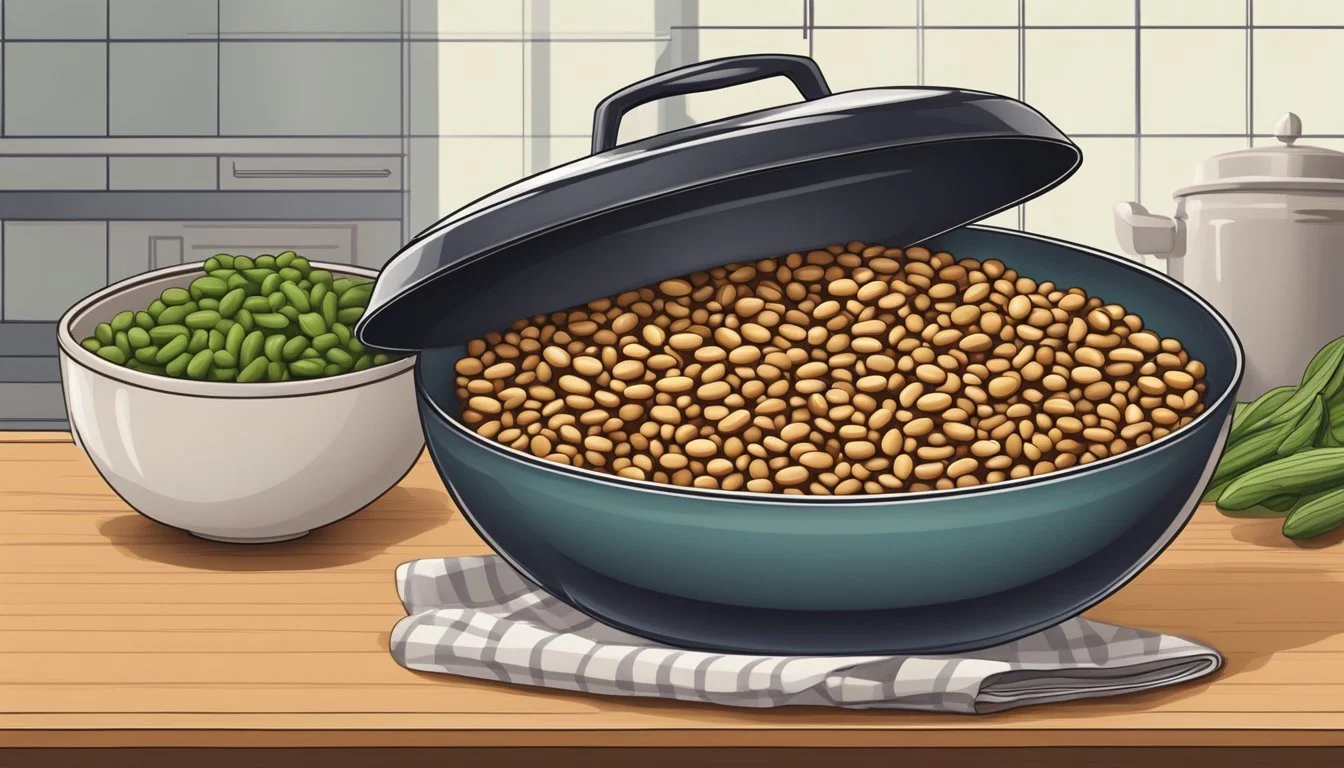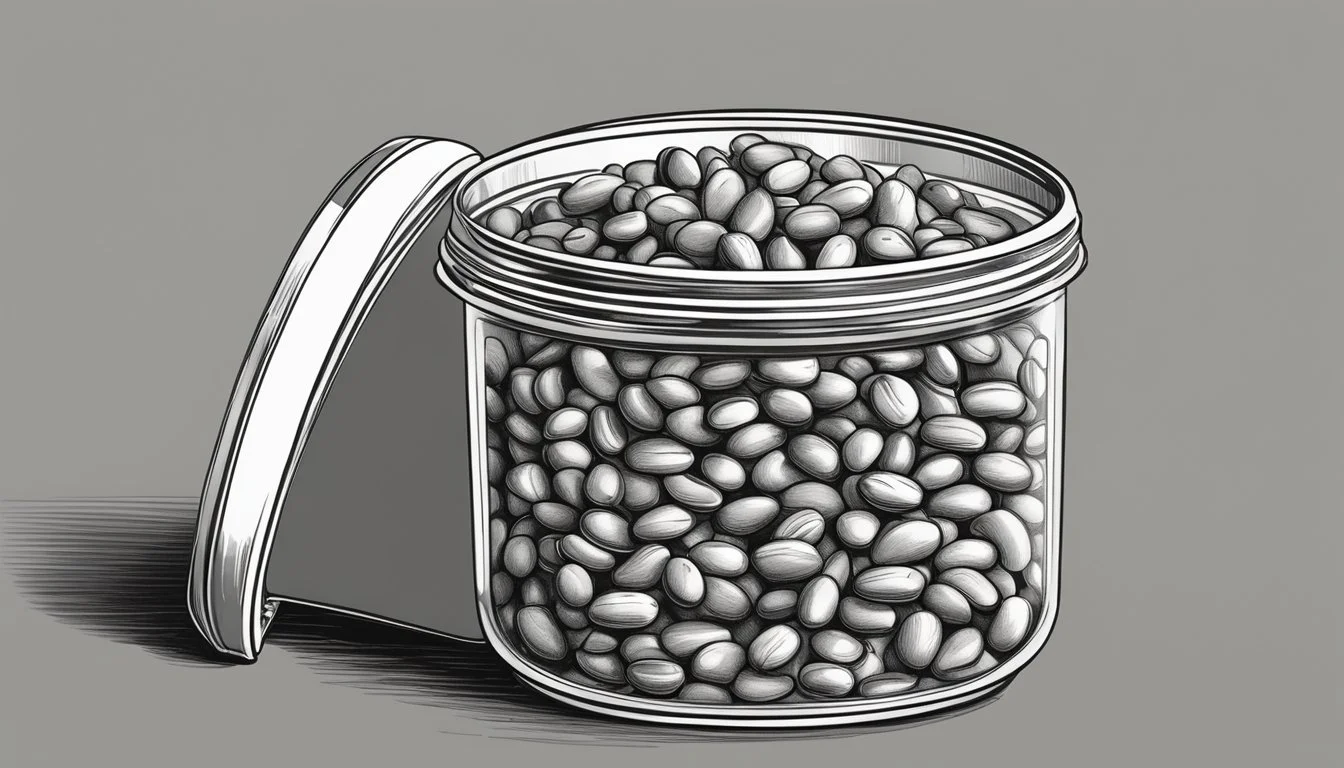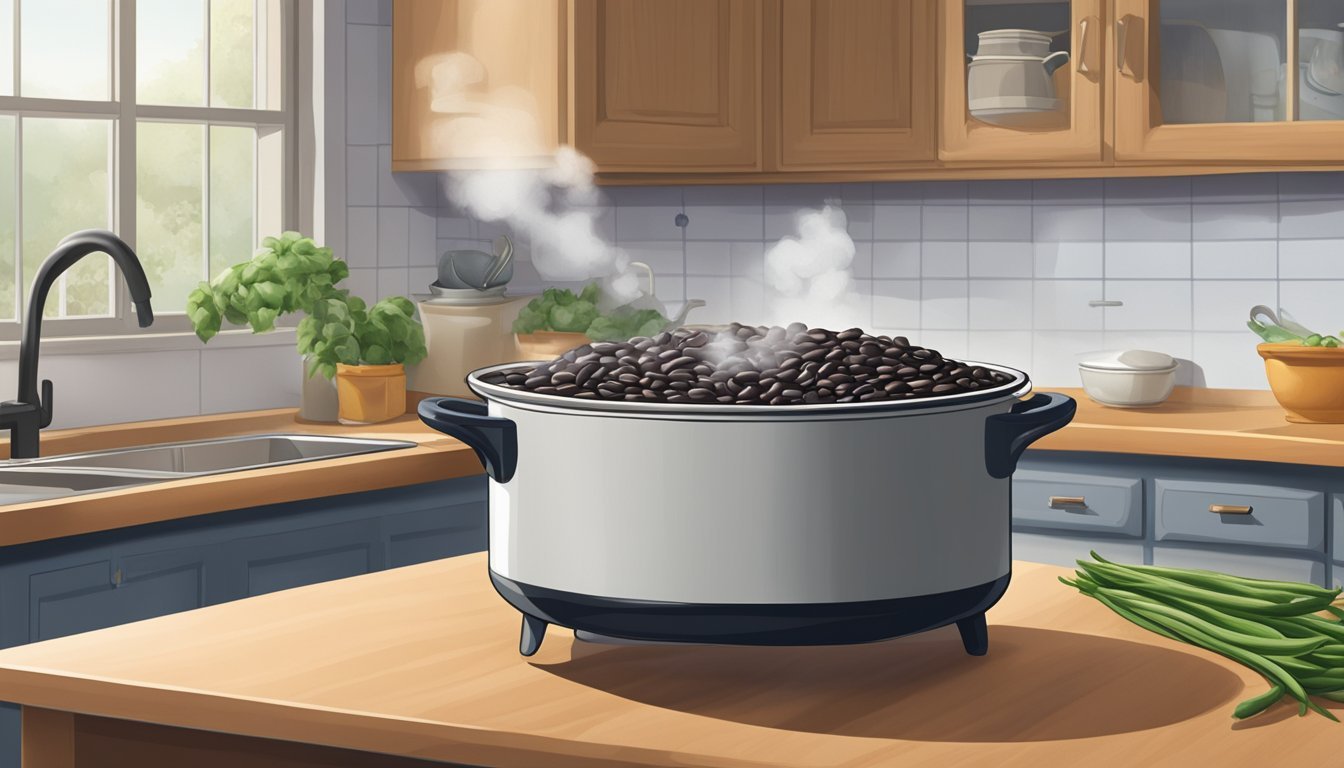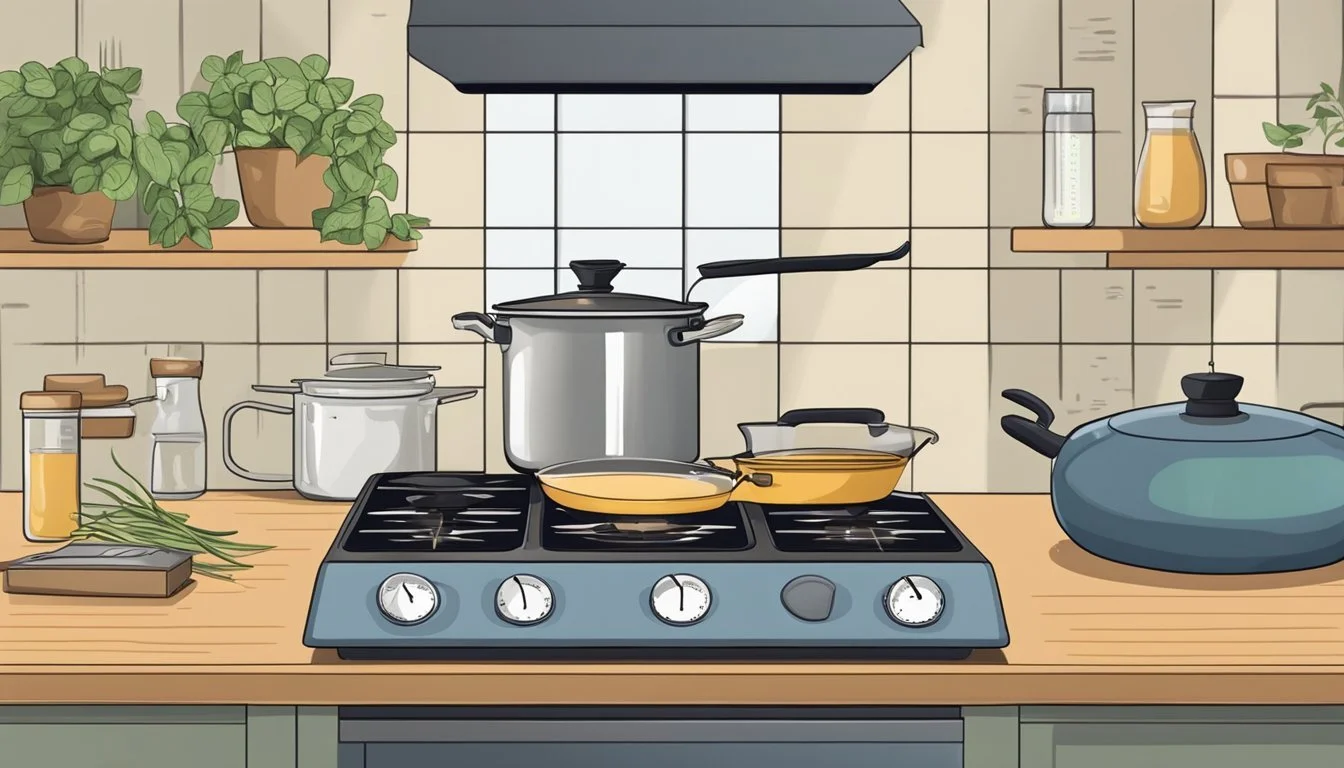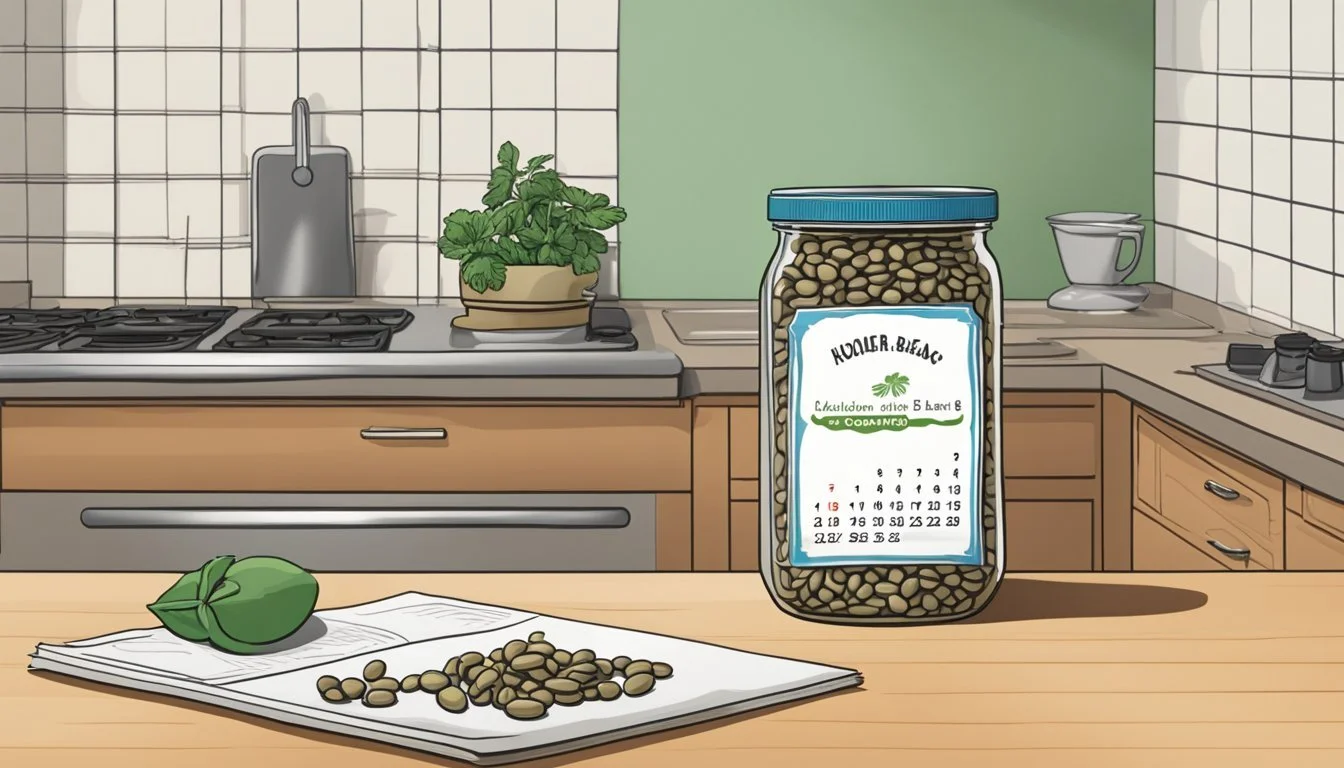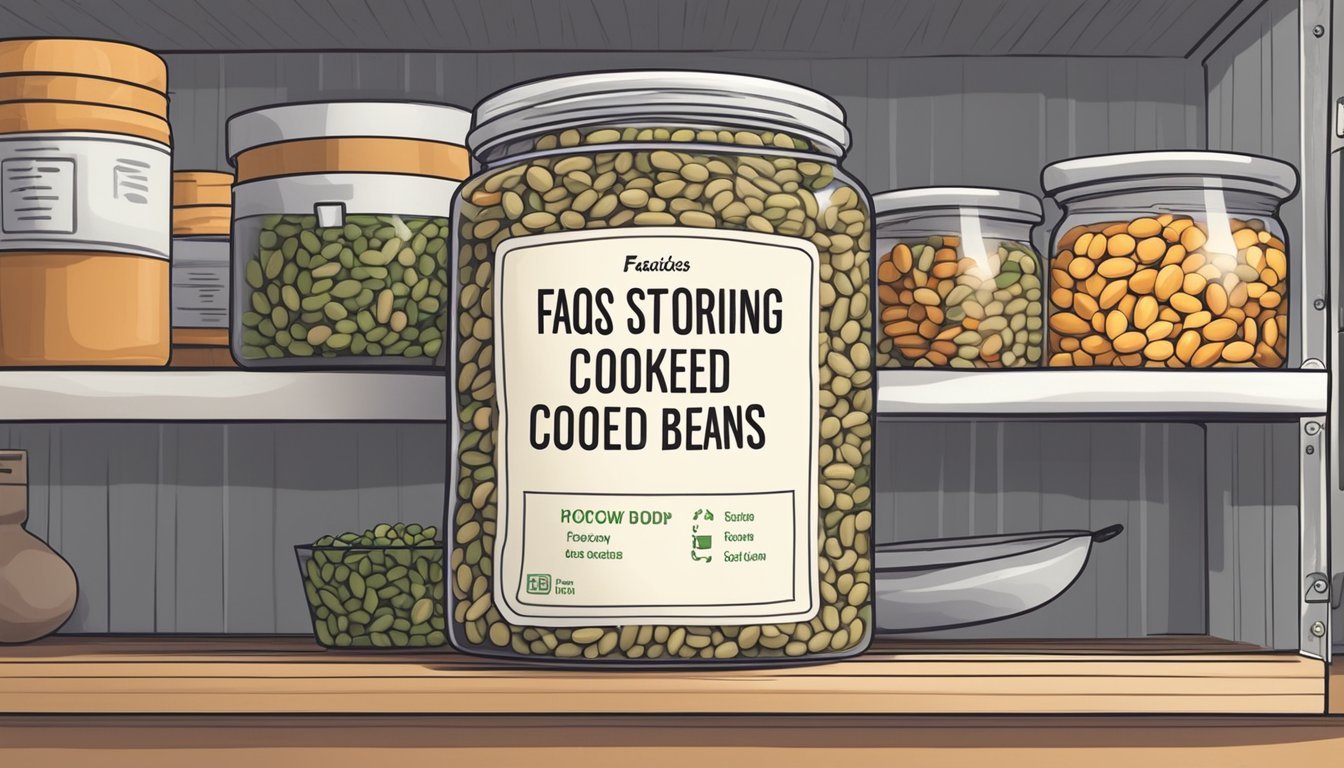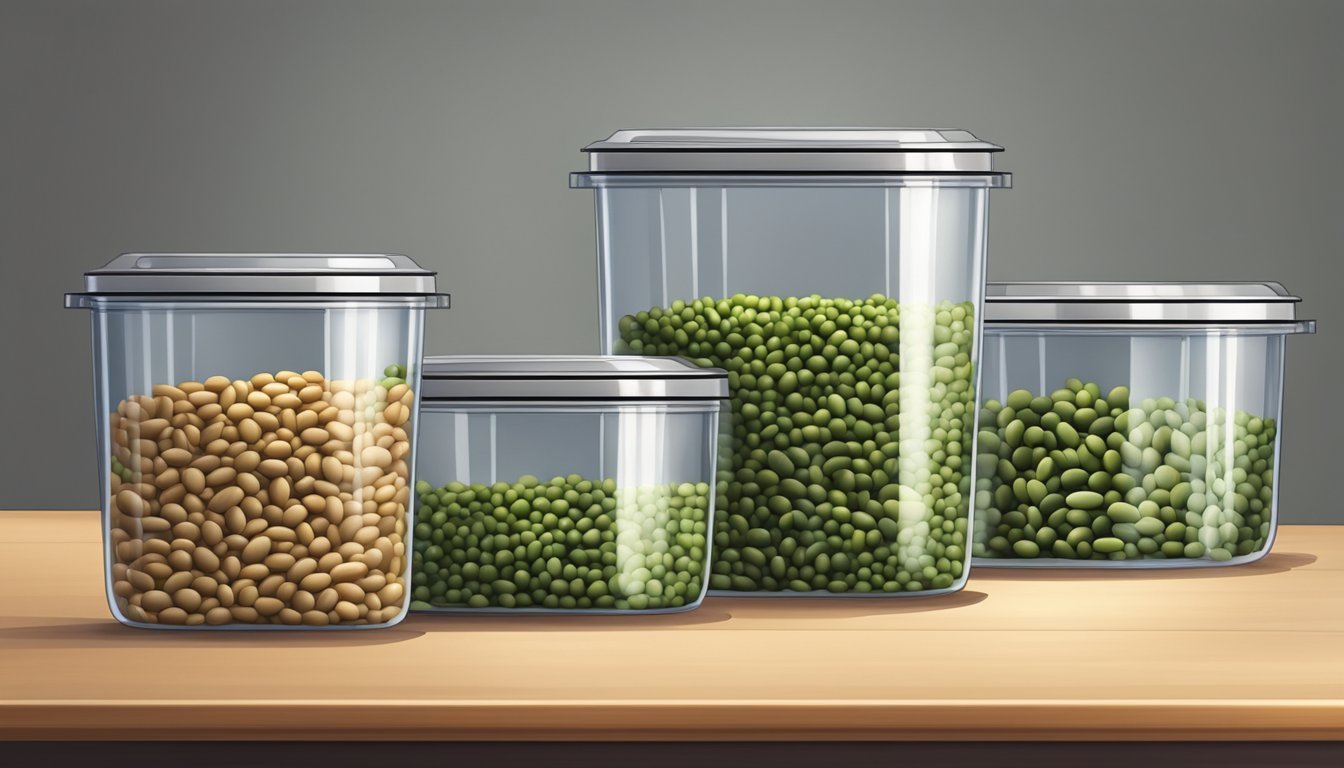How Long Do Cooked Beans Last?
Shelf Life and Storage Tips
When it comes to storing cooked beans, understanding their shelf life is essential for maintaining both their quality and safety. Cooked beans are a staple in many kitchens due to their versatility, nutritional value, and the convenience they offer in a variety of dishes. Generally, they can last in the refrigerator for about 3 to 5 days when stored properly. The key to maximizing their shelf life is to cool them down promptly after cooking and transfer them to the refrigerator within an hour to inhibit bacterial growth.
To ensure the beans remain safe to eat and retain their flavor, storing them in an airtight container is crucial. The timeframe for how long cooked beans last can vary slightly depending on the bean variety, but adhering to safe storage practices will help extend their freshness. In addition to refrigeration, cooked beans can also be frozen, typically lasting 1 to 2 months in the freezer, which is a practical option for long-term storage.
Understanding Cooked Beans Shelf Life
Cooked beans offer nutritious benefits but have a limited shelf life that depends on storage conditions. Recognizing the shelf life and signs of spoilage can ensure safety and quality.
Freshness and Spoilage Indicators
Cooked beans maintain their quality in terms of flavor, texture, and odor when stored properly. One should be cautious and inspect beans for spoilage, which typically presents itself as:
Texture changes: Cooked beans should be relatively soft, but not mushy. Any slimy texture is a clear indicator of spoilage.
Odor: Fresh cooked beans will have a mild, bean-like smell. An off or sour odor suggests bacterial growth.
Visual cues: Any mold or discoloration is a sign that cooked beans should no longer be consumed.
In terms of safety, consuming spoiled beans can lead to foodborne illnesses. Therefore, it is essential that one conducts a thorough inspection for the indicators mentioned above before consumption.
Factors Affecting Shelf Life
Several key factors influence the shelf life of cooked beans in storage. They are as follows:
Temperature: Cooked beans should be stored in the refrigerator at temperatures below 40°F (4°C) to slow down bacterial growth.
Container: They ought to be placed in an airtight container to prevent exposure to air and contaminants.
Time: Refrigerated cooked beans typically last between 3 to 7 days. The sooner they are consumed, the better the quality in terms of freshness and flavor.
Freezing: For an extended storage solution, freezing cooked beans can preserve them for approximately 6 months, though some sources suggest up to a year is possible.
Adherence to these storage practices does not only preserve the sensory qualities of the beans but also ensures that they remain safe to eat within the expected shelf life.
Storing Cooked Beans
Proper storage is critical for maintaining the safety and quality of cooked beans. Attention to temperature control and container selection can help extend shelf life and minimize the risk of food poisoning.
Refrigeration Best Practices
Refrigerating cooked beans slows down bacterial growth and is essential for safe storage. Beans should be refrigerated within one hour of cooking to prevent the risk of bacterial contamination. They can be kept in the refrigerator for 3 to 5 days when stored correctly at a constant temperature of 40°F or below.
Temperature: Maintain a steady fridge temperature to avoid fluctuations that can promote bacterial growth.
Timeframe: Ideally, consume refrigerated cooked beans within five days to ensure quality and safety.
Freezing and Thawing Methods
For longer-term storage, cooked beans freeze well. Frozen beans can last between 1 and 2 months in the freezer. To freeze beans:
Cool: Ensure beans are completely cooled before freezing to prevent condensation and ice crystals.
Portion: Divide beans into useable portions to avoid thawing more than necessary later on.
Package: Store in airtight containers or freezer bags, remove excess air, and seal tightly.
When ready to use, thaw beans in the refrigerator overnight. For quicker thawing, place the container in a bowl of cold water or use the microwave's defrost setting. Consume thawed beans promptly and do not refreeze.
Airtight Containers and Storage Tips
Storing beans in airtight containers is vital to preserve freshness and prevent contamination. An airtight container can be a plastic container with a tight-fitting lid or a vacuum-sealed bag. Store beans in these containers to:
Prevent dehydration: Airtight containers keep beans from drying out in the fridge or freezer.
Reduce bacteria: These containers protect food from contaminants that can cause spoilage and food poisoning.
Maintain flavor: Airtight storage keeps the beans from absorbing other flavors and odors in the refrigerator or freezer.
Use clear containers when possible to easily identify and monitor the state of the beans. Always label the storage containers with the date of storage to keep track of freshness.
Shelf Life of Different Preparations
The shelf life of cooked beans can vary greatly depending on how they are prepared and stored. Each type of preparation has specific storage recommendations that can extend the freshness and safety of the dish.
Salads and Cold Dishes
Cold bean salads should be stored in the refrigerator and are typically safe to consume for up to 3-5 days. It is crucial to keep them in airtight containers to prevent contamination and maintain flavor.
Salad: Refrigerate in airtight container, 3-5 days
Bean dip: Refrigerate, consume within 3-5 days
Soups and Stews
Bean soups and stews have a similar refrigerated shelf life of approximately 3-4 days when stored in airtight containers. These dishes can sustain quality and safety due to the liquid content, which helps prevent the beans from drying out.
Bean soup: Refrigerate in airtight container, 3-4 days
Chili: Refrigerate, consume within 3-4 days
Casseroles and Baked Dishes
Casseroles (What wine goes well with casseroles?) and baked dishes containing beans, like bean casserole and baked beans, will last around 3-5 days in the refrigerator if properly stored in covered airtight containers or tightly sealed with foil or plastic wrap.
Bean casserole: Refrigerate in covered container, 3-5 days
Baked beans: Refrigerate, covered tightly, 3-5 days
For all these dishes, to ensure maximum freshness and safety, refrigerate leftovers within two hours of cooking, and always reheat to a temperature of 165°F before consuming.
Health and Nutritional Considerations
When incorporating beans into a diet, one must consider their high nutritional value and the potential health risks associated with consuming spoiled beans. Beans are not only a rich source of protein and fiber but also contain essential nutrients beneficial for overall health.
Nutritional Value of Beans
Beans are a powerhouse of nutrition. They serve as an excellent source of plant-based protein, making them a cornerstone in many vegetarian and vegan diets. A single cup of cooked beans typically contains about 15 grams of protein, which is essential for muscle repair and growth. They are also high in fiber, which can aid in digestion and help maintain a healthy weight. In addition to protein and fiber, beans are packed with vital nutrients such as iron, potassium, magnesium, and folate, supporting a range of bodily functions from oxygen transport to the production of DNA.
Protein: Approx. 15 grams per cup (cooked)
Fiber: High content varies by bean type
Iron: Essential for oxygen transport in the blood
Potassium: Crucial for maintaining healthy blood pressure
Magnesium: Involved in over 300 biochemical reactions in the body
Folate: Necessary for cell division and making DNA
Risks of Consuming Spoiled Beans
Consuming beans that have gone bad poses significant health risks, including food poisoning. Spoiled beans can become a breeding ground for bacteria such as Bacillus cereus, Clostridium perfringens, and Staphylococcus aureus, which can cause symptoms like nausea, vomiting, diarrhea, and abdominal cramps. It's crucial to store cooked beans properly — in the fridge for up to 5 days and in the freezer for extended preservation. If beans exhibit signs of spoilage, such as an off smell, slimy texture, or discoloration, they should be discarded immediately to prevent the risk of illness. Eating beans fresh and properly stored ensures that they remain a healthy ingredient in a balanced diet.
Signs of spoilage:
Off smell
Slimy texture
Discoloration
By understanding both the nutritional benefits and the importance of proper food handling, beans can be safely enjoyed as a nutritious and versatile component of one's diet.
Extending the Life of Cooked Beans
To maximize longevity and retain optimal quality, cooked beans can be preserved via freezing or by using preservatives. Adhering to the right techniques ensures the beans remain safe for consumption and their texture and taste are well maintained.
Freezing Strategies for Longevity
When freezing cooked beans, it is vital to reduce exposure to air to prevent freezer burn. They should follow these steps:
Cool the beans completely after cooking.
Portion the beans into storage containers or heavy-duty freezer bags.
Leave a small space at the top of the container to allow for expansion when frozen.
Seal the containers tightly, pushing out as much air as possible.
Label the containers with the freeze date before placing them in the freezer.
Properly frozen beans can maintain quality for up to 6 months. Upon thawing, they should consume frozen beans promptly for the best flavor and texture.
Utilizing Preservatives
Although most home cooks do not use commercial preservatives, certain ingredients like salt can act as a natural preservative to some extent. Here's how to use it:
Add a moderate amount of salt to the cooking water.
Store beans in their cooking liquid to keep them moist and to retain some of the flavors that might otherwise be lost.
However, individuals should be aware that excessive salt can alter the taste and texture of the beans. The beans must be stored in airtight containers, whether with or without salt, to extend shelf life and maintain quality. Properly stored, beans can last in the refrigerator for 3 to 5 days.
Culinary Tips for Cooked Beans
Cooked beans can flourish in numerous culinary applications, with careful attention paid to flavor enhancement, recipe variety, and texture preservation. Adhering to best practices ensures that beans remain a versatile and delicious component in a range of dishes.
Enhancing Flavors Post-Freezing
After freezing cooked beans, one may notice a subtle change in flavor and texture. To counter this, chefs recommend thawing beans in the refrigerator and then gently reheating them with fresh spices or seasonings. Incorporating aromatic ingredients like garlic, cumin, or fresh herbs can revitalize the beans' flavors. It’s important to avoid boiling as this can make beans mushy; instead, opt for a slow simmer.
Creative Uses in Recipes
Cooked beans are an excellent staple for vegan and vegetarian recipes due to their protein content and versatility. They can be featured in a variety of dishes beyond traditional soups and chilis. Here are some inventive uses for cooked beans:
Salads: Add texture and protein to any salad.
Hummus: Blend with tahini, lemon juice, and spices for a simple, flavorful spread.
Tacos: A hearty filling for tacos when mashed and seasoned.
Pasta: Mix with your favorite pasta along with olive oil, garlic, and vegetables.
Reheating Without Quality Loss
To maintain the integrity of cooked beans during reheating, one should aim to reheat only the portion needed to prevent multiple heating cycles. Place them in a covered saucepan with a small amount of water to distribute the heat evenly. Use medium heat to avoid rapid temperature variation that can alter the beans' texture. Here’s a quick reference for reheating methods:
Method Instructions Stovetop Use a saucepan with a dash of water; heat on medium. Microwave Cover with a microwave-safe lid to reduce condensation. Oven Reheat in an oven-safe dish at a low temperature.
Before storing beans in freezer bags, ensure all air is expelled to prevent freezer burn and condensation buildup. Labeling bags with the date of freezing helps in maintaining an efficient rotation and utilizing beans while they are at their peak quality.
Handling and Preventing Contamination
Ensuring the safety and longevity of cooked beans requires vigilance against contamination and mold. To protect against foodborne illnesses and maintain the quality of the beans, two critical steps involve preventing cross-contamination and storing beans in environments that deter mold growth.
Avoiding Cross-Contamination
To minimize the risk of cross-contamination, one must handle cooked beans and other foods separately. Here are specific measures to follow:
Use separate utensils: Always use clean utensils when serving or handling cooked beans, and never mix them with utensils used for raw foods.
Clean surfaces thoroughly: Kitchen surfaces should be sanitized before and after coming into contact with cooked beans to prevent the transfer of bacteria.
Proper Storage to Deter Mold Growth
Proper storage is essential in preventing mold growth and bacteria proliferation. Below are specific storage tips to keep cooked beans fresh:
Airtight containers: Place cooked beans in airtight containers to protect against exposure to air and contaminants that can induce mold.
Cool temperatures: Refrigerate cooked beans promptly at temperatures below 40°F (4°C) to slow bacterial growth and prevent foodborne illnesses.
Avoid strong odors: Store beans away from foods with strong odors to prevent odor absorption, which can compromise taste and freshness.
Types of Beans and Their Shelf Life Variations
When discussing the shelf life of cooked beans, it's important to note that not all beans have the same storage longevity. Factors such as bean type and storage conditions play a crucial role in how long your cooked beans can last before deteriorating.
From Pinto to Black Beans
Pinto Beans: As a common variety, cooked pinto beans can be refrigerated for 3-5 days. When stored in an airtight container and kept at a consistent cold temperature, these beans maintain their quality within this timeframe.
Black Beans: Similarly to pinto beans, cooked black beans can last for about 3-5 days in the refrigerator. This time frame ensures that black beans retain their texture and nutritional value, specifically their high fiber content.
Kidney Beans: Whether light or dark red, kidney beans share the same refrigerated shelf life as pinto and black beans, lasting typically between 3-5 days.
Cannellini Beans: These white beans, also known for their fiber, have a shelf life that mirrors that of other common beans; when refrigerated properly, they can be expected to last 3-5 days.
Special Cases: Lentils and Chickpeas
Lentils: As smaller legumes with a faster cooking time, lentils may exhibit a slightly shorter fridge life, typically 3-4 days. Still, they must be stored in airtight containers after cooling to maximize this span.
Chickpeas (Garbanzo Beans): Cooked chickpeas, boasting versatility and high fiber, can be refrigerated for up to 7 days. Their robust nature contributes to a slightly longer shelf life compared to other beans when stored correctly.
Recorded durations are approximations and assume optimal storage conditions in the refrigerator: a consistent temperature and sealed containers to protect from air exposure and moisture.
Cooked Beans in Different Cuisines
Cooked beans play a significant role in various international dishes, serving as a staple that complements an array of flavors and ingredients. They can be found in a variety of forms such as an integral bean salad component, a creamy dip, or as a hearty addition to comfort foods.
Beans in Mediterranean Dishes
In Mediterranean cuisine, beans are often celebrated for their versatility and nutritional value. Examples include:
Salads: Many Mediterranean salads incorporate beans, such as white beans in a traditional tuna and bean salad, offering a satisfying protein boost.
Dip: A popular bean dip called "hummus" is made with chickpeas, tahini, garlic, lemon juice, and olive oil, embodying the simplicity and freshness typical of the region.
This cuisine leverages beans to enhance dishes with their texture and ability to absorb flavors, supporting a predominantly vegetarian diet.
Beans in American Comfort Food
Beans are a cornerstone in American comfort food, delivering both flavor and substance. Key dishes include:
Red Beans and Rice: A classic dish where red kidney beans are slow-cooked with vegetables, spices, and often smoked meat, served with rice.
Casseroles and Nachos: Beans are utilized in many casserole recipes, providing added depth and nuttiness, or as a topping in nachos for a rich, comfort food experience.
Vegetarian Options: Beans serve as a meat substitute in comfort dishes such as veggie burgers, where they add texture and protein content.
Beans in American cuisine offer comforting warmth and are frequently paired with ingredients like cheese, quinoa, and various sauces to create indulgent dishes.
Best Practices for Pre-Cooking Beans
Preparing beans correctly before cooking is essential for both taste and digestibility. This section explores optimal methods for soaking and seasoning dried beans, setting the stage for further culinary uses, whether it be in burgers, salads, or other dishes.
Soaking and Cooking Dried Beans
Soaking dried beans is a crucial step that should not be overlooked. Here are the steps to follow:
Inspect and Clean: Sort through the beans to remove any stones or debris. Rinse them thoroughly under cold water.
Soaking Methods:
Traditional Soak: Place beans in a large bowl and cover with water, about 2-3 inches above the beans. Allow to soak for 6-8 hours, or overnight.
Quick Soak: For a faster method, bring the beans to a boil for a minute, then let them sit for an hour off the heat, covered.
Cooking:
After soaking, drain and rinse the beans once more. Move them to a cooking pot, cover with fresh water by an inch, and bring to a boil.
Reduce the heat to achieve a gentle simmer and cook until the beans are tender.
Seasoning and Flavors
Correct seasoning is what elevates the taste of beans from good to great. Here is how to season beans:
Cooking Liquid: Enhance beans by simmering them in a flavorful liquid. Instead of water, you might use a brine or a broth as the cooking liquid.
Herbs and Spices: Add bay leaves, garlic cloves, or other spices early in the cooking so the beans absorb these flavors.
Salting: Salt can toughen beans if added too early, so it's best to add salt midway through cooking or after the beans are softened.
By adhering to these pre-cooking fundamentals, beans will be well-prepared for a variety of dishes, from hearty burgers to refreshing salads. Properly soaked and seasoned beans also ensure optimal flavor and a pleasant texture, making them a delightful addition to any meal.
Labeling and Keeping Track of Cooked Beans
Proper labeling and organization are crucial for maintaining the freshness and quality of cooked beans, whether they are stored in the fridge or the freezer. These practices ensure that one can easily keep track of their beans' shelf life and consume them safely.
Date Labeling for Freshness
When storing cooked beans, it is essential to label them with the date of cooking. This date marking serves as an indicator for how long the beans have been stored and helps prevent the consumption of spoiled food. The beans should be placed in the refrigerator or freezer within two hours of cooking to maintain their safety and quality. The label should clearly state the cooking date, and one might also add the expected expiration date, which is typically 3 to 5 days for the fridge.
Organizing Beans in the Freezer
For longer storage, freezing cooked beans is an effective option. Here's how one should organize beans in the freezer:
Transfer the cooled beans to freezer-safe bags or containers. It's important to squeeze out any excess air from freezer bags to prevent freezer burn.
Label the freezer bags or containers with the date of freezing. Beans can be stored in the freezer for approximately 6 months while maintaining quality.
Organize the beans in the freezer in a way that the oldest beans are in front and the newest ones in the back, ensuring proper rotation and usage based on their labeled dates.
Keep the freezer at a consistently cold temperature to prevent the beans from thawing and refreezing, which can deteriorate their quality.
Final Considerations and Tips
In the final analysis, ensuring the longevity and safety of cooked beans requires adhering to shelf life recommendations and employing creative strategies for leftover beans.
Revisiting Shelf Life Guidelines
Cooked beans have a respectable shelf life when stored properly in the refrigerator, typically lasting 3-5 days. To maintain their freshness and reduce the risk of bacterial growth, one should store beans in airtight containers and ensure they are refrigerated within an hour after cooking. For longer preservation, beans can be frozen, with a potential shelf life extension of up to 6 months when stored correctly.
Fridge Storage: 3-5 days in airtight containers
Freezer Storage: Up to 6 months
Creative Leftover Bean Ideas
Leftovers can be more than a repeat meal; they can transform into new, appealing dishes. Fresh beans, when they've been cooked and properly stored, can enjoy a second life in various recipes. They can be incorporated into soups, mashed to form burger patties, or added to salads for a protein boost. If stored properly, these leftover beans will retain their quality and offer versatile options for subsequent meals.
Soups: Add beans for a hearty texture
Burgers: Mash and mix to create vegetarian patties
Salads: A protein-rich topping
FAQs About Storing Cooked Beans
How long can cooked beans be stored in the fridge?
Cooked beans can be safely stored in the refrigerator for 3 to 5 days. They should be placed in the fridge within one hour of cooking to ensure safety.
What is the ideal temperature for storing cooked beans in the fridge?
The refrigerator should be set at a temperature below 40°F (4°C) to effectively slow the growth of bacteria and maintain the quality of the beans.
Should cooked beans be stored in an airtight container?
Yes, one should transfer cooked beans to an airtight container. This prevents moisture and other contaminants from affecting the beans and helps in keeping them fresh.
Can cooked beans be stored in the freezer?
Cooked beans can also be frozen. They will last in the freezer for up to 6 months. Freezing beans extends their shelf life and preserves quality, but be sure to thaw them properly when ready to use.
What is the best method to thaw frozen cooked beans?
Thawing should be done gradually in the refrigerator or by using the defrost setting on a microwave. Rapid temperature changes can compromise the texture and flavor of the beans.
Storage Summary Fridge Freezer Container Airtight Airtight Temperature < 40°F 0°F Shelf Life 3-5 days ~6 months
For the best results, one should always store cooked beans promptly and check for any signs of spoilage before consumption.
Conclusion
Cooked beans generally remain safe to consume for 3 to 5 days when stored in the refrigerator. It is critical to ensure that the beans are placed in an airtight container to maximize freshness and to stave off bacterial growth.
Storage Method: Beans should be cooled down and then refrigerated within one hour of cooking.
Temperature: The refrigerator should be at a consistent temperature of 40°F (4°C) or colder.
Type of Bean: Different bean varieties may have slight variations in shelf-life, but the 3-to-5-day rule holds as a reliable guideline.
For extending the life of your cooked beans, consider freezing them. Frozen beans can last for up to 6 months when properly stored in airtight containers or freezer bags.
Remember, before consuming refrigerated beans, always check for signs of spoilage such as an off smell, discoloration, or a slimy texture. If any of these signs are present, it is best to err on the side of caution and discard the beans.
Following these storage practices ensures that your cooked beans remain safe and delicious, while minimizing food waste and ensuring that you can enjoy them over several days.



